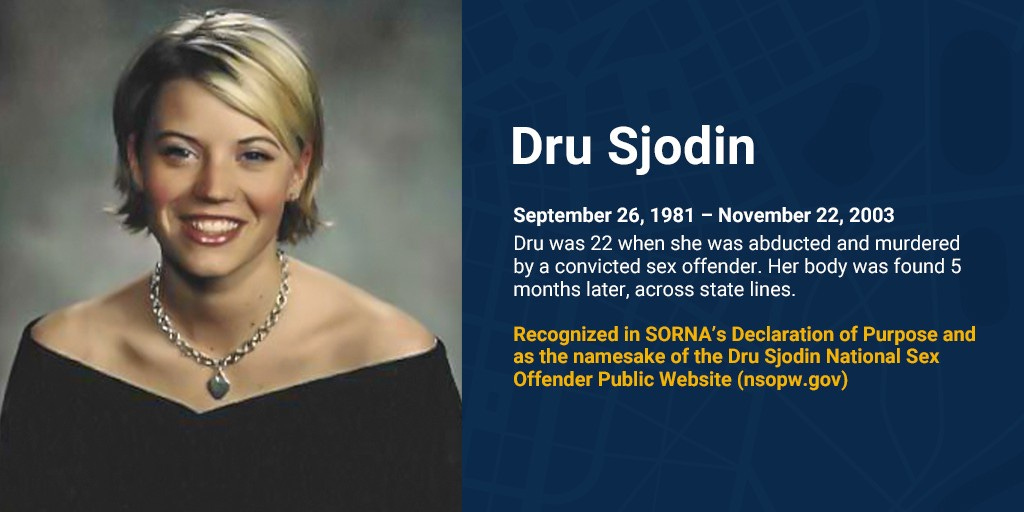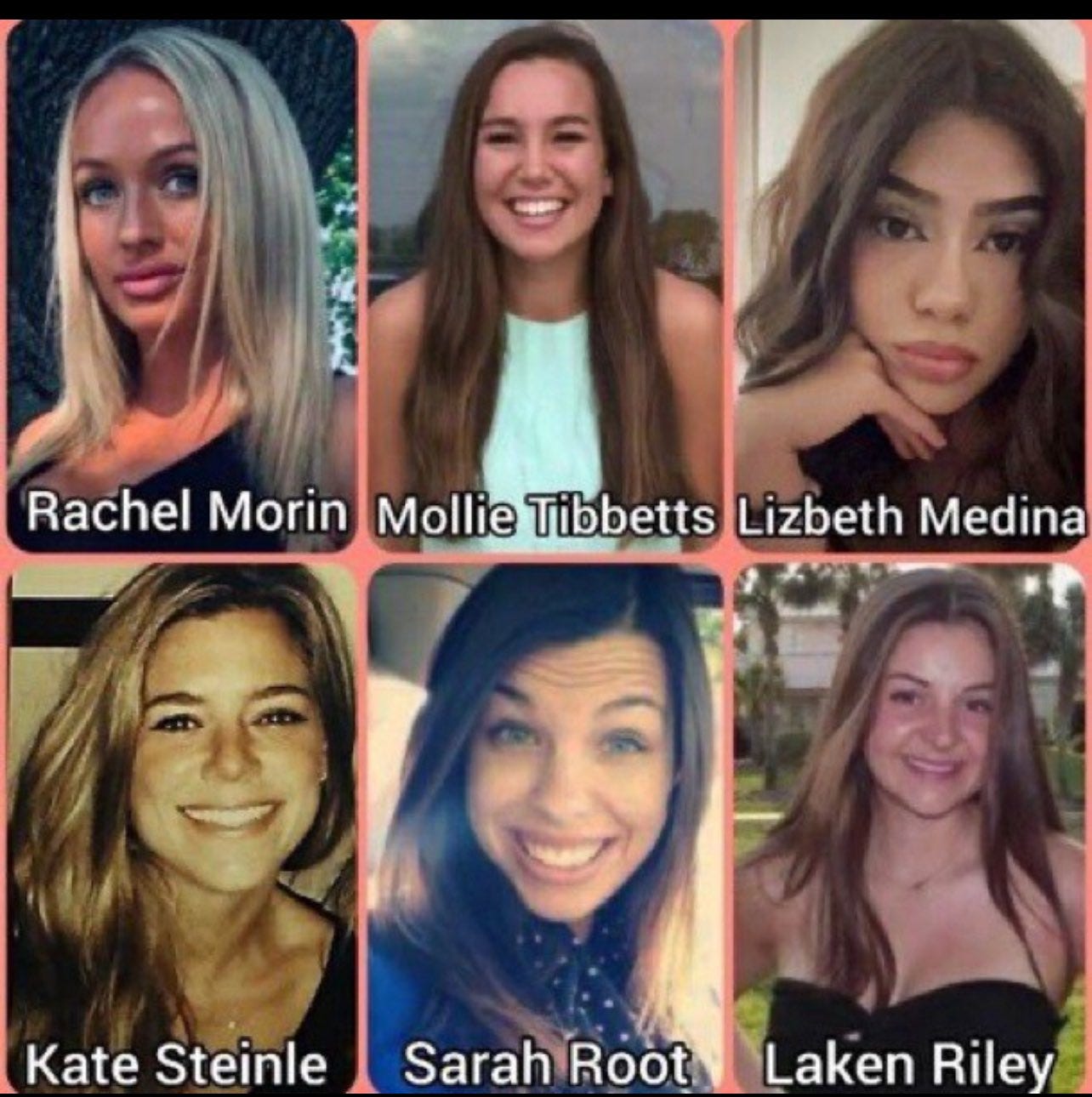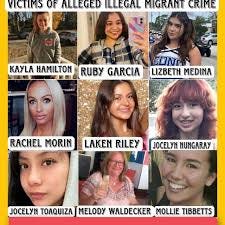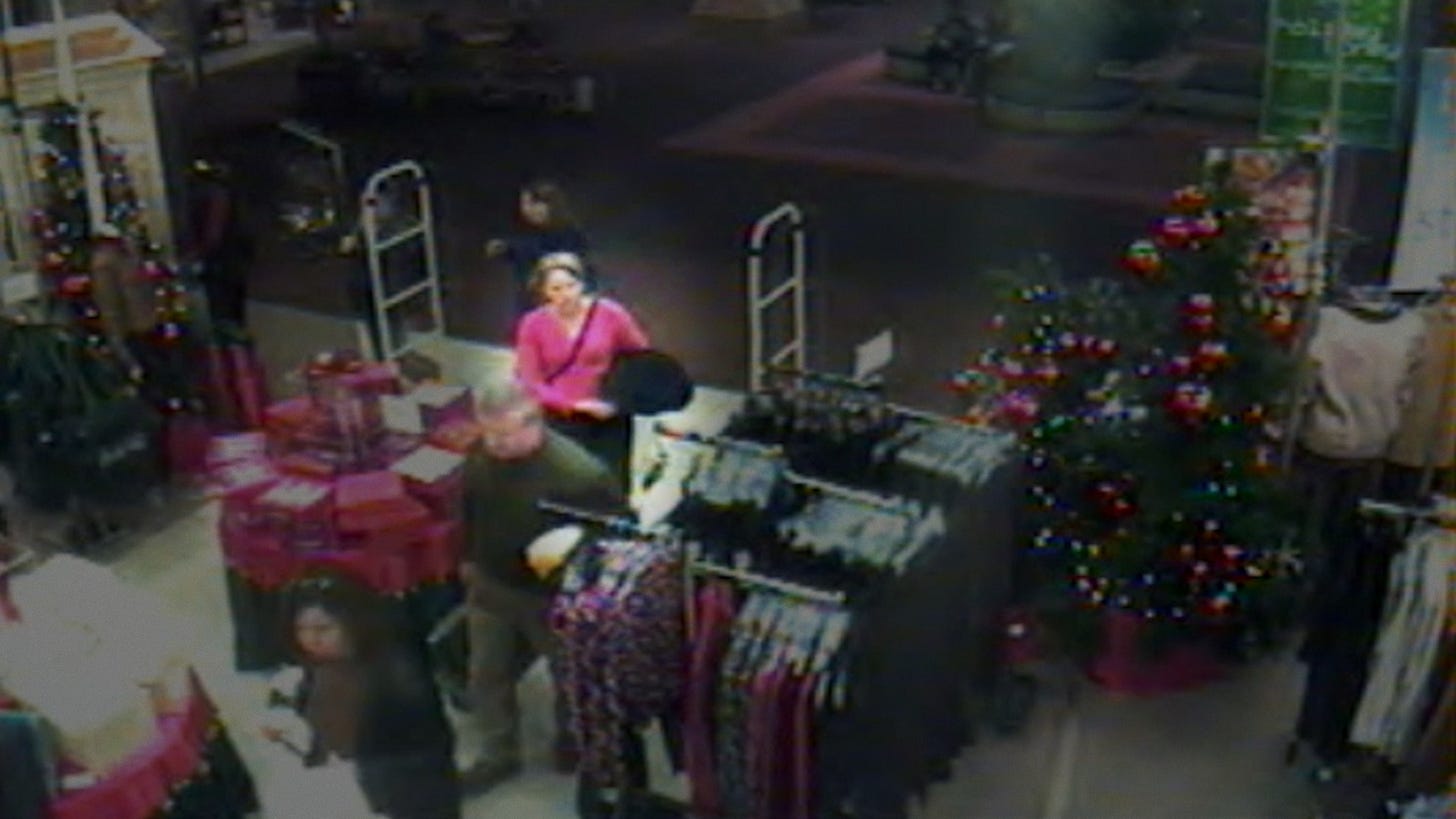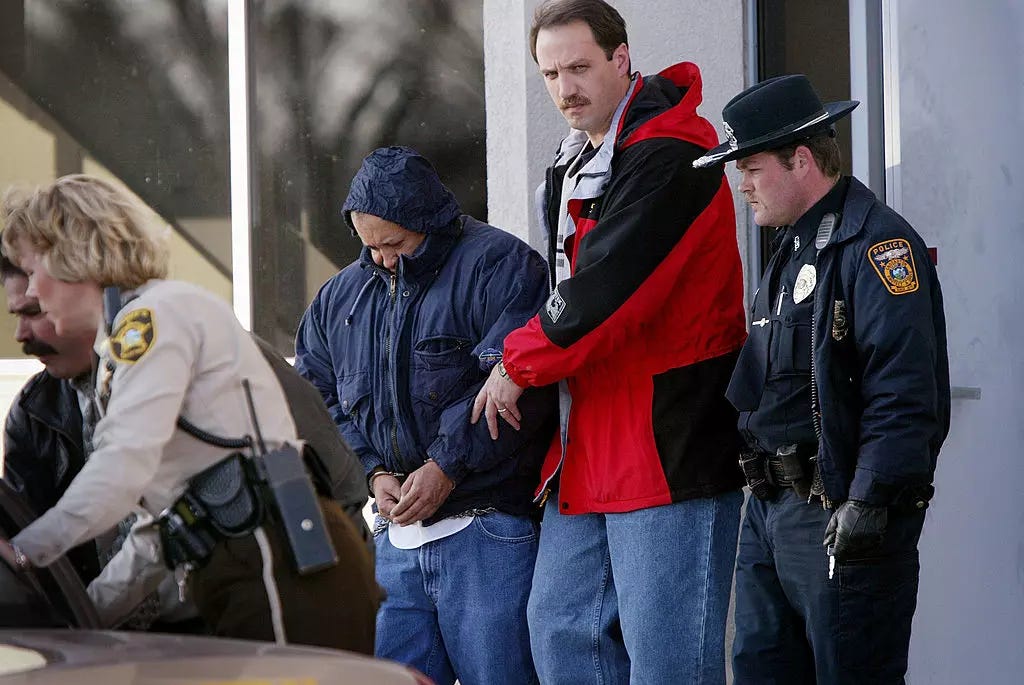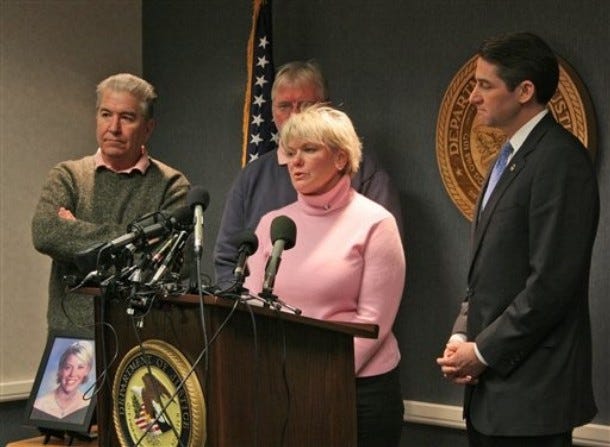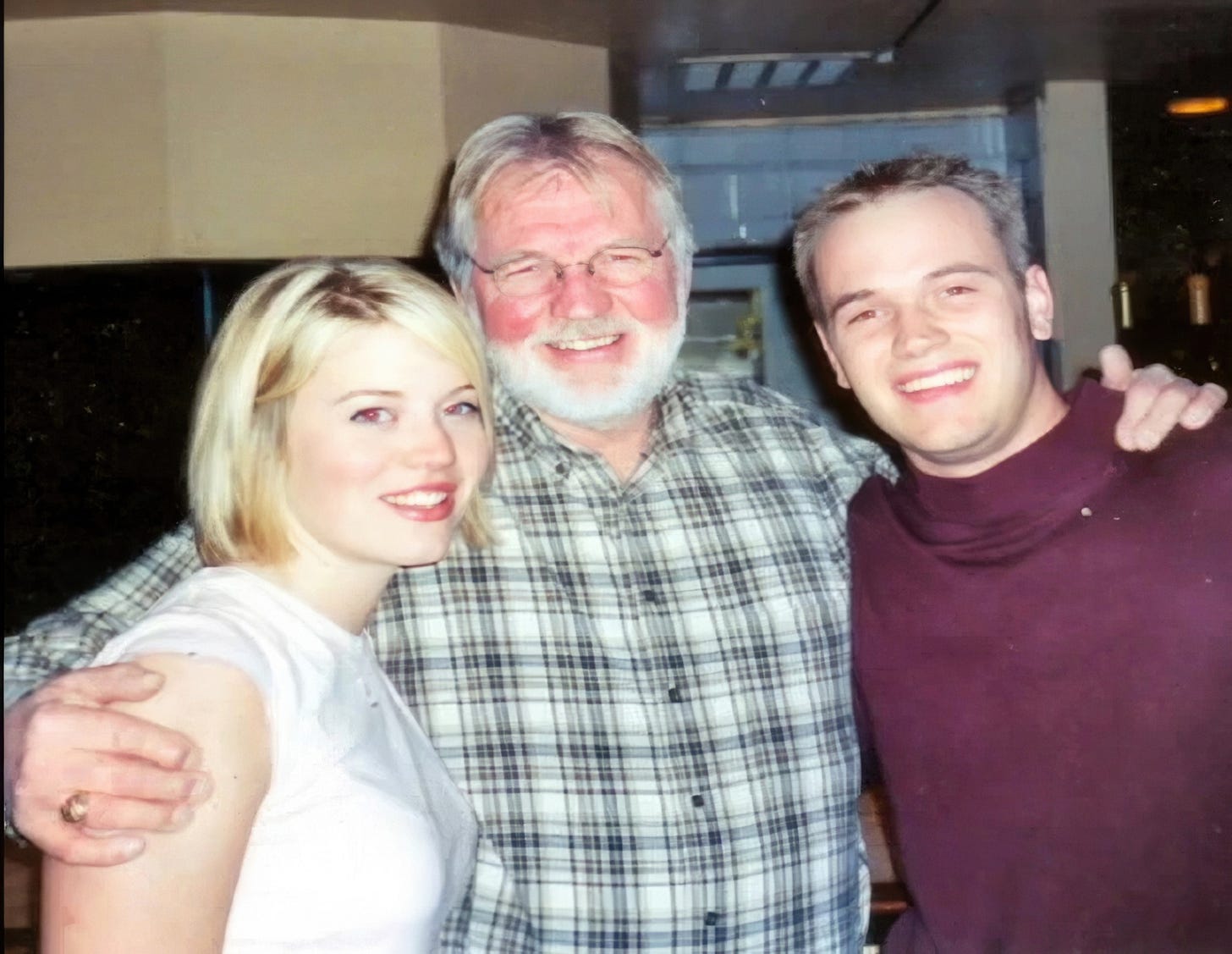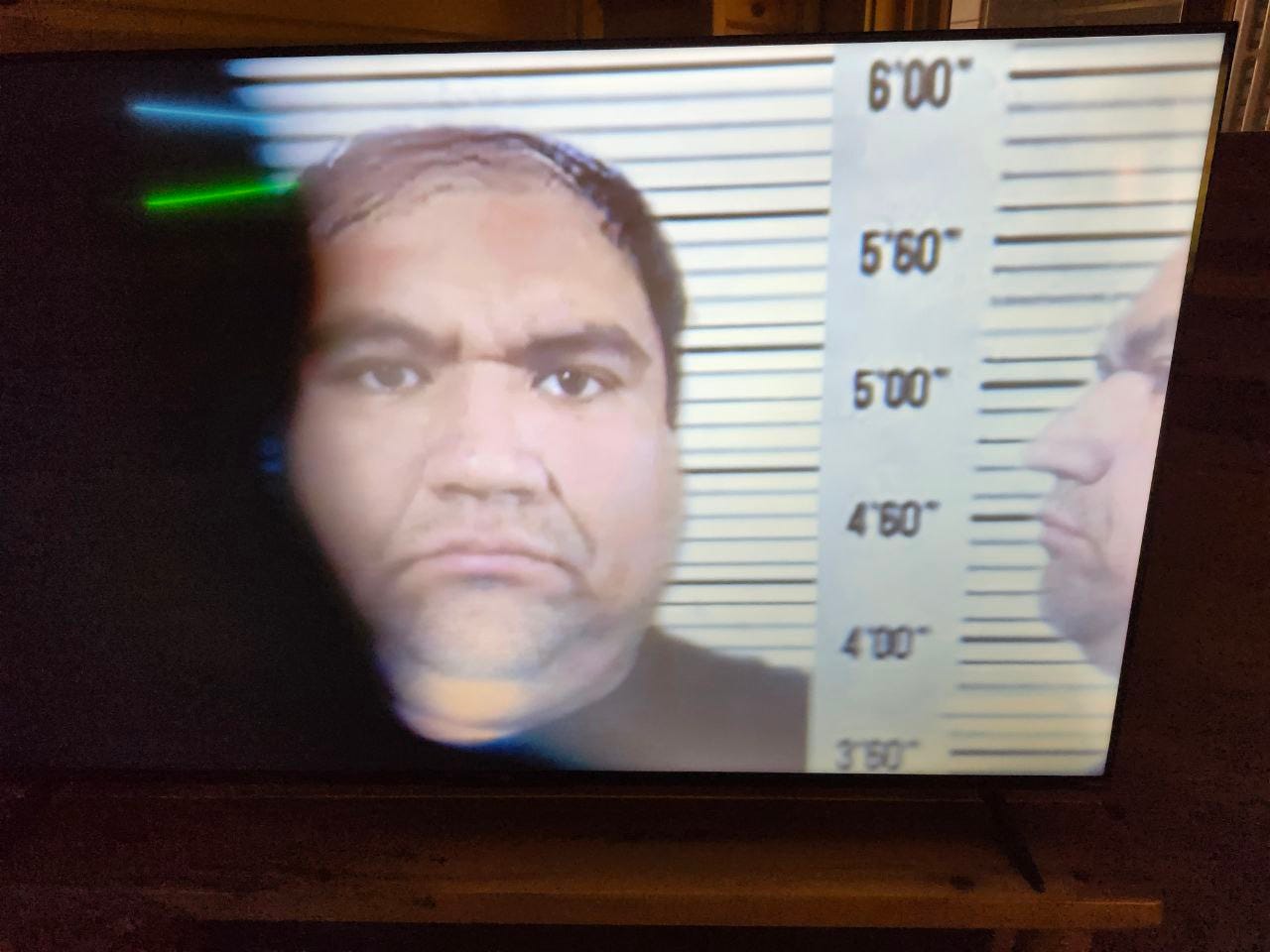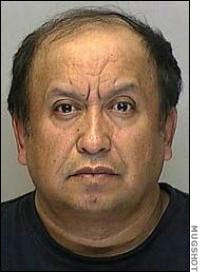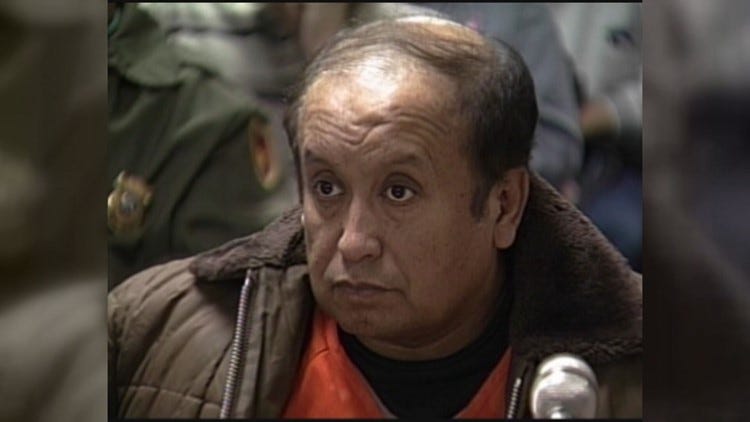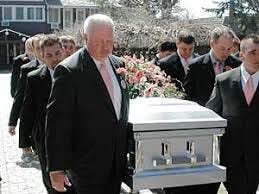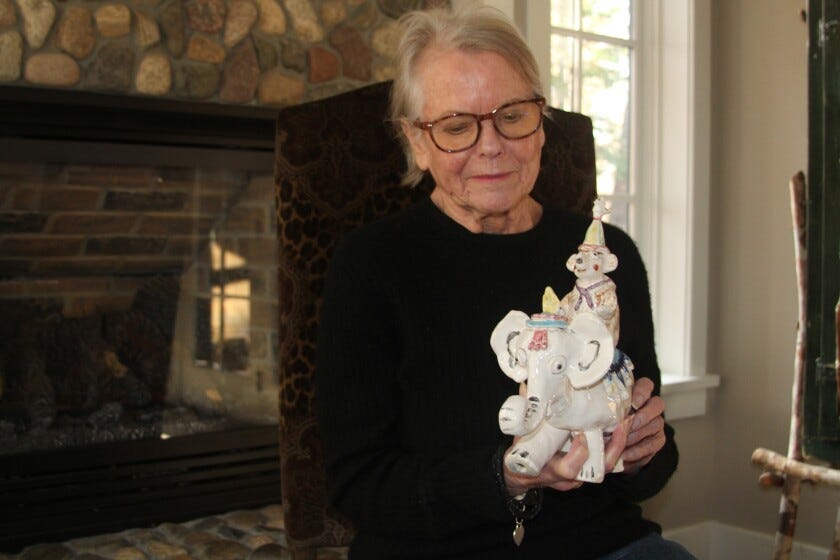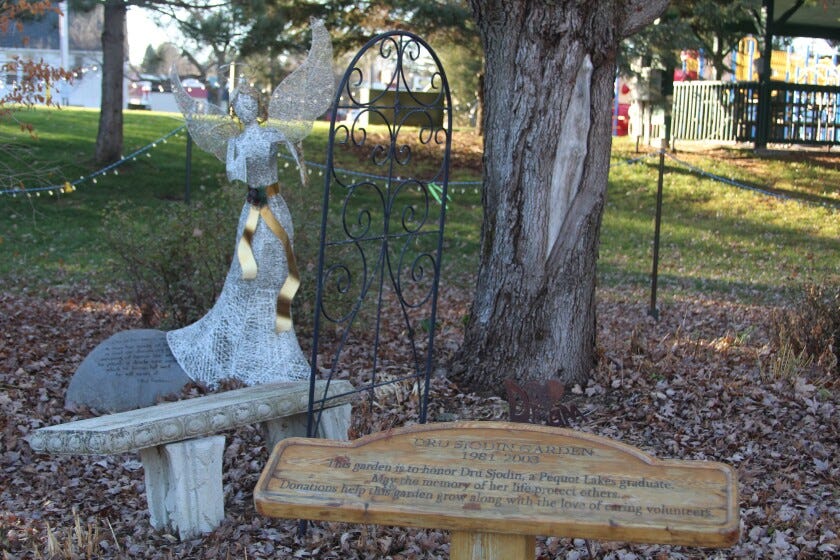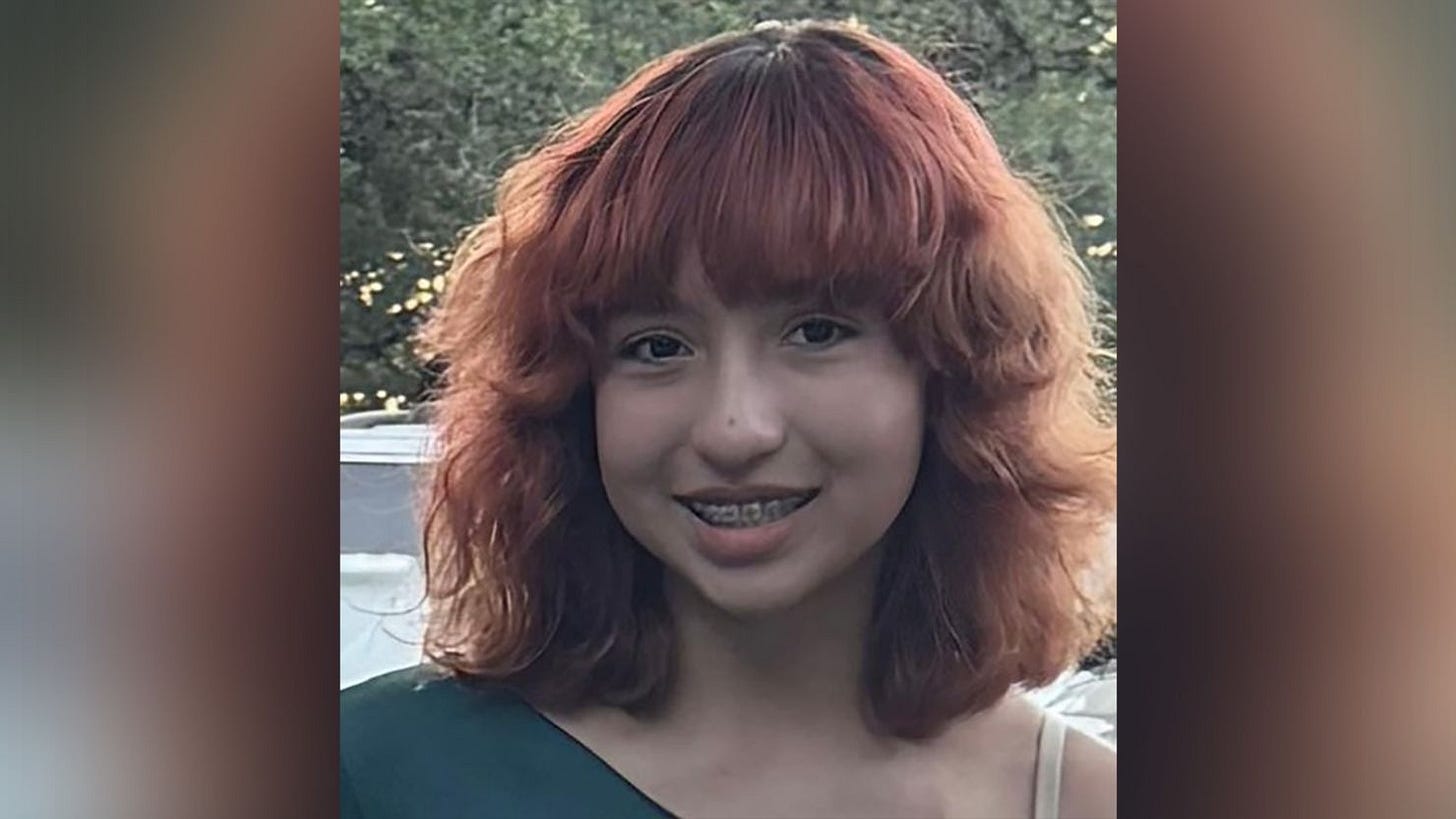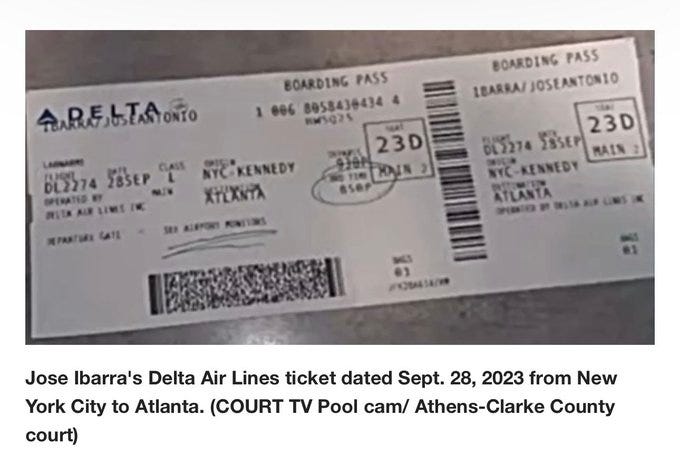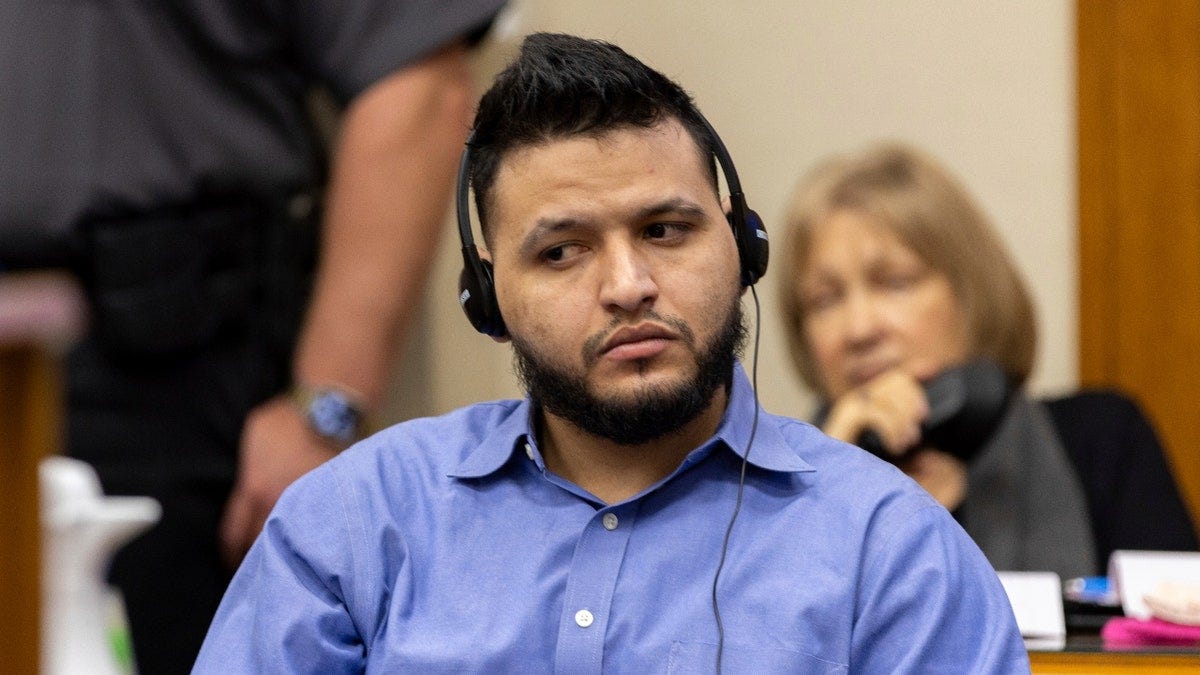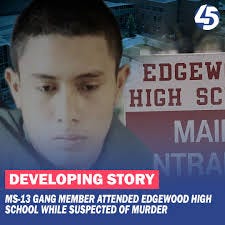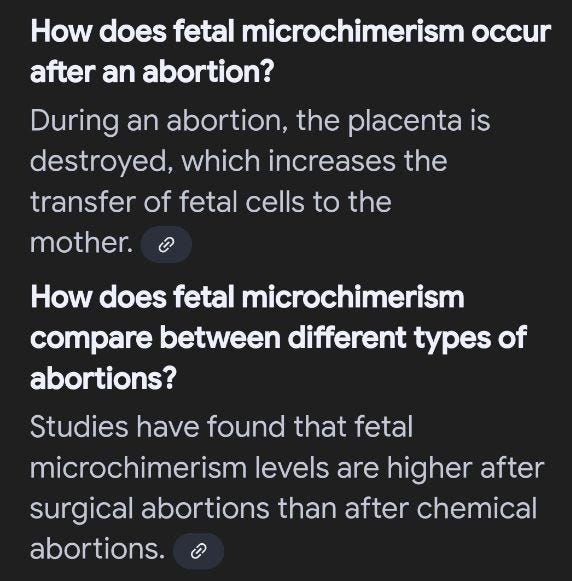Last year, I received a card in the mail from Linda, one of my newsletter readers since 2021, with this picture on it. I thought to myself - what a lovely girl - she looks familiar.
Then, I read the card. Shocked, I realized that this was Linda’s beautiful daughter, Dru Sjodin, who had been abducted, tortured, assaulted and murdered by an registered sex offender in Minnesota, 20 years before, on November 22, 2003.
I remember when it happened. I remember feeling bad and then, sadly, Dru quickly faded from memory as my “busy life” took precedent. I never knew the details of her murder - I don’t remember the “news” telling me what really happened.
Last summer, one of Linda’s friends, Matt, contacted me and asked if I would meet him and Linda for lunch. I did. We had a great conversation about politics and faith and life - and I left that lunch feeling grateful and blessed with two new like-minded friends.
We didn’t talk much about Dru at lunch - I could see the pain in Linda’s face when I mentioned her name - but as I was driving home I knew that God wanted me to know more and share it with others. The news in the summer of 2024 was filled with stories about several girls and young women - like Laken Riley, Jocelyn Nungaray, Rachel Morin, Kate Steinle, Mollie Tibbetts and more - who had been recently brutally raped and murdered by illegal aliens - criminals who should NOT even be in our country in the first place!
These girls and women, and many others, should be alive today. So should Dru.
I spent the rest of that day, and several days after, researching Dru’s life and her story. I watched documentaries and read dozens of news articles and testimony from trial transcripts.
Dru was kidnapped from a shopping mall parking lot in Grand Forks, North Dakota (near the Minnesota border) as she walked to her car after she finished her afternoon shift. Her body was found five months later.
A 50-year-old registered level 3 (most serious) sex offender, Alfonso Rodriguez Jr., was arrested and prosecuted federally because he crossed state lines with Dru while committing his crimes. He was convicted on kidnapping, rape and murder charges and sentenced to death. But that’s not the whole story. The devil is in the details.
I woke up one morning with the firm belief that I was supposed to write the real story about Linda’s daughter so that the world knows and the world remembers. Dru was a sign - an early warning of what was to come if we didn’t change our ways - and, frankly, we ignored it.
I asked her mother, Linda, if it was okay if I wrote a newsletter about Dru. She said yes. This year is the 21st anniversary of her murder. This is a compilation of published sources & I have NOT “fact-checked” it all. I’ve asked her mother, Linda, to read it first and correct any glaring errors.
Who was Dru?
Dru Katrina Sjodin was born September 26, 1981, in Minneapolis, Minnesota. Dru graduated from Pequot Lakes High School in northern Minnesota in the spring of 2000 and was voted High School Homecoming Queen her senior year.
Dru was very artistic and loved playing basketball, volleyball and golf. Dru chose to attend the University of North Dakota in Grand Forks and interned through the university’s aviation program. She had just changed her major to photojournalism.
Dru was part of the Gamma Phi Beta Sorority and worked with underprivileged teens while holding two jobs and carrying a full academic schedule. She had recently been on the cover of her university magazine for a feature about the Clothesline Project, which honors victims and survivors of sexual assault by decorating colored T-shirts and hanging them on a clothesline to raise awareness about the issue. She was looking forward to a much-anticipated trip to Australia planned for the spring of 2004.
The Abduction
Five days before Thanksgiving 2003, Dru Katrina Sjodin, now a 22-year-old student at the University of North Dakota in Grand Forks, went missing. It was in the evening of November 22, 2003 when she was abducted from the Columbia Mall parking lot in Grand Forks, North Dakota. She had just finished her shift, working at Victoria's Secret, and was on the way to her second job. She worked two jobs while going to school full-time.
Surveillance camera footage showed that Dru shopped at the mall's Marshall Field's store and bought a new purse and then left the mall around 4pm.
Dru spoke on her cell phone to her boyfriend, Chris Lang, while walking to her red Oldsmobile Cutlass which was parked close to the mall. As she neared her car that Saturday afternoon, the four-minute phone conversation abruptly ended.
Lang heard Dru say, “Okay, Okay, Oh, my God,” before the phone went dead.
Dru Sjodin's boyfriend was the last person to talk to Dru:
"I did not know the sense of urgency of this phone call at the time. I never in a million years dreamt that this was happening. There was no sense of urgency — more just a cell phone call being cut off for any number of reasons. Honestly, I had no idea that this terrible thing was happening."
He got another call from Dru nearly three hours later, at 7:42 p.m., but said he could hear only static. He said he told her to move somewhere else so he could hear her better, but nothing happened. He tried to call her back, but without any success.
After this 2nd dropped call, Chris called Dru’s roommate, saying he had received two calls from Dru. With this second call, and Dru not showing up at her other job, he was now concerned about what happened to her.
Later, it was determined that the 2nd final phone call from Dru’s phone was made from a rest stop near Crookston. Her red Oldsmobile Cutlass was found in the mall parking lot.
The Search
In the days and months to come, thousands of people, many of whom had never met Dru, searched for her in the snow and bitter cold.
More than 1,700 volunteers braved the winter to search for Dru and divers searched the Red Lake River. The Governors of Minnesota & North Dakota even called out the National Guard to aid in the search.
"We're determined to find Dru. This is something that has touched all North Dakotans."
Dru Sjodin's mother, Linda Walker, said that she believed someone knew where her daughter was and pleaded with that person to "come forward with her and bring her home safely to us."
Allan Sjodin, Dru’s father, said he immediately drove to the town after getting word that his daughter was missing.
He said when he got to the parking lot and saw her car, he was so taken with emotion that he held a vigil next to the vehicle, hoping his daughter would return to her car.
Before the search ended, five months later, millions nationwide would know Dru Sjodin’s face and story - and little about the man who abducted, terrorized and murdered her.
The Investigation and Arrest
Four days after Dru Sjodin went missing at the North Dakota mall, investigators received a tip from someone who claimed they saw a known sex offender shopping in Grand Forks the day she disappeared. Mall surveillance videos led investigators to their first potential suspect, Alfonso Rodriguez, Jr., 50, of Crookston, Minnesota.
Rodriguez was actually on surveillance video sitting inside the mall and watching women come and go.
He followed a blonde haired woman out the door.
By Thanksgiving Day 2003, police narrowed their focus to one man as Dru's abductor - a rapist with a violent and predatory history who spent most of his adult life behind bars.
Investigators picked up Rodriquez and questioned him on November 26, 2003. He admitted that he was in Grand Forks four days earlier to shop for clothes and claimed to have been near Columbia Mall on the evening of Dru’s disappearance, reportedly watching Once Upon a Time in Mexico at the Columbia Mall Cinema 4. This claim was a lie - as the film was not playing at that cinema or any other local theater at the time.
Rodriguez allowed investigators to search his car. Knives were found in the trunk and glove compartment of the vehicle. The police also found receipts of purchases that Rodriguez had made at several stores near the mall including one for a knife he bought at Menard’s.
Police also found a woman's shoe and a knife in Rodriguez's car that had blood on it that matched Dru's DNA.
On December 1, 2003 - nine days after Dru's disappearance - Crookston police arrested Rodriguez, who was living with his mother in Crookston. Once arrested, Rodriguez remained silent, invoking his right to a lawyer.
Dru's hair was found on a blanket in Rodriguez's car, a 2000 Mercury Sable. They also found knives and cleaning solution in his car. Blood on the knives were found to be a match to Dru. A 4-inch folding knife with a serrated edge was found in the trunk in a pool of household cleaner. There was blood on the rear right passenger side window and in the back seat as well as two other areas. The blood matched DNA taken from Dru Sjodin's toothbrush.
In addition, a black loafer belonging to Dru was found beneath a bridge in Crookston, along the Red Lake River.
Police confiscated several items from Rodriguez for forensic analysis, including two light-colored hair strands, blood matching Dru's DNA profile, knives, latex gloves, speaker wire, multiple swabs of blood and blood spatters found on clothes and in his car.
Rodriguez was no stranger to the police. He had an extensive criminal history, which involved repeated sexual offenses against women.
In fact, he had just been released from a Minnesota prison on May 1, 2003, just some six months before Dru's disappearance, after having served 23 years for charges that included rape, aggravated assault and kidnapping.
The Perpetrator
Rodriguez was a Level 3 Minnesota registered sexual offender (the worst) who had been released from prison after a 23-year sentence only six months prior to Dru’s disappearance.
Rodriguez has a history of sex offenses and of attempting to kidnap adult females.
More than two decades before, Alfonso Rodriguez Jr. already was being called a "dangerous person to society."
At the time of Dru’s abduction, Rodriguez had three convictions on his record -- two in 1974 for aggravated rape, and another in 1980 for stabbing a woman in the arm and abdomen when she refused to get into his car. Arrested in 1974 for kidnapping and sexually assaulting two Crookston women at knifepoint, he was sent to the state security hospital in St. Peter, Minnesota. Days after he left there, in 1980, he stabbed another woman and tried to kidnap her in Crookston.
Born February 18, 1953, in Texas, Rodriguez is the second oldest of five children of migrant workers who moved for 15 years between Texas and the Red River Valley. His family settled in Crookston, Minnesota in 1963.
He later described his home life as unpleasant and said his parents were critical of him and unreasonable in their demands. Rodriguez said he used alcohol and drugs growing up, including acid, hash and marijuana.
Not proficient in English, Rodriguez dropped out of school in ninth or 10th grade to work at American Crystal Sugar Company’s factory in Crookston.
In 1973, he sought help for anxiety and depression. He said then that he had made several obscene phone calls to women, according to a psychological report from the Minnesota Security Hospital in St. Peter.
By the end of 1974, Rodriguez was in court pleading guilty to rape and attempted rape.
Rodriguez committed his first sexual assault with a knife when he was 21 by attempting to rape a woman in Crookston he asked to give him a ride home. She agreed. He directed her to a driveway, grabbed her by the throat, pulled her back in the car when she tried to get out and tried to rape her. Shirley Iverson, Rodriguez's first victim, said that he assaulted her after she agreed to give him a ride home after recognizing him as a fellow student from school.
"Being held against your will, and then to be, you know, sexually assaulted combines the two worst fears that you have.”
That first attack in 1974 was against a woman he knew, but a month later he raped a second woman, a stranger, at knifepoint.
A month later, Rodriguez offered to help a woman start her vehicle when she came out of a Crookston theater. Rodriguez forced his way into the truck, drove her into the country, threatened her with a knife and raped her. She fought him off to escape despite Rodriguez stabbing her twice with a kitchen knife and threatening to kill her.
He was sentenced to 15 years in prison in one case, but the sentence was stayed, and he was sentenced to the Minnesota Security Hospital for sex offender treatment in the other case. He was sent to the sex offender treatment program at St. Peter in 1975. A 1976 psychological report says Rodriguez appeared to be suffering from "an alcoholic personality disorder with some paranoid, schizoid and antisocial tendencies."
Rodriguez reported at the time that he was sexually aggressive but that it wasn't a problem to control the feelings.
He spent his early adult years at a high-security Minnesota state hospital, where he earned his GED and attended sex offender courses. In 1980, Rodriguez struck again when he was on leave from the hospital to visit his parents’ home in Crookston. He attempted to kidnap a woman and stabbed her twice before she fought him off and fled. He stepped out of a car and asked a woman for directions on a Crookston street. She said he grabbed her arm and told her: "Get in the car or I'm going to kill you."
When she struggled, Rodriguez stabbed her. The knife blade went completely through her left arm. He also stabbed her in the abdomen.
At his sentencing for the 1980 attack, Rodriguez said he drank heavily, dabbled in acid and marijuana and that an older woman molested him as a child. His third attempted kidnapping and stabbing led to 23 more years in prison.
Alfonso Rodriguez Jr. was the son of migrant farm workers Dolores and Alfonso Rodriguez Sr., who traveled between Crystal City, Texas, and Minnesota and then decided to settle in 1963 in Crookston, Minnesota. Dolores Rodriguez, calling her son "Tito," said on the witness stand, in a soft Mexican-Spanish accent, that he had health problems from the time he was born.
Alfonso Rodriguez Jr. was a "wonderful son, kind and loving" said his mother Dolores Rodriguez. She said her son had anxiety and fear of living back in society, but was released anyway by Minnesota’s Department of Corrections - again and again.
Dolores testified that her son "Tito" developed slowly as a baby, suffering for the first eight months of his life from severe diarrhea. Rodriguez was one of five children, he has an older sister, two younger sisters, and a younger brother. Rodriguez's mother described working in the sugar beet fields near Crookston every summer during the 1950s before the family moved to Crookston to settle there permanently in 1962.
During the summers they spent working in the fields near Crookston, the family lived in a ramshackle farmhouse in the middle of farm fields. Rodriguez's mother said she would hang the laundry to dry at night and by the next morning, their clothing was sticky with residue from the spray planes, which would drop pesticides in the sugar beet fields and potato fields in the Red River Valley.
From an early age, Rodriguez suffered from severe headaches and tremors and his head would swell up. Rodriguez's older sister Sylvia suffered similar maladies.
The family decided to move permanently to Crookston from Texas because "my children were behind in school," Dolores Rodriguez said. The family would leave Texas every April and worked in the Crookston area until November when they would head back to Texas.
She described a difficult childhood for Rodriguez, his three sisters and brother.
"Other children used to kick them and call them 'dirty Mexicans' and lots of other names, they used to cry (because they had to) go to school.”
Rodriguez had been released from prison May 1, 2003, after serving a 23-year prison term for rape, aggravated assault and kidnapping a woman. He was released as a Minnesota Level 3 sex offender which meant he was highly likely to reoffend - WHICH HE DID some 6 months later when he abducted Dru.
The only treatment Rodriguez received during the his last 23 years in prison was in 1981, for chemical dependency. He refused sex offender treatment.
Prison records show Rodriguez lived a quiet life in prison, often displaying model behavior. But documents show the opposite:
- A 1976 evaluation said Rodriguez was sexually aggressive and "appears to be suffering from an alcoholic personality disorder with some paranoid, schizoid and anti-social tendencies."
- In 2001, Rodriguez told prison officials considering whether to recommend civil commitment, which would send him to a security hospital indefinitely, that he had a past history of domestic violence and trouble controlling his anger.
- A committee, months before his 2003 release from prison, classified Rodriguez as a high-risk sex offender, those most likely to reoffend. The committee agreed his assaults appear spontaneous and random while "Rodriguez's willingness to use force may be escalating in severity."
"At the end of the day, Alfonso Rodriguez stayed in prison longer than he had to because he wouldn't undergo treatment. He left prison with the same propensity, the same propensity to kill and act violently toward women."
Yet, they released him anyway.
Five months after Rodriguez’s arrest, on April 17, 2004, Dru’s body was found just outside of Crookston, Minnesota when deep snow drifts began to melt.
Dru's body was found partially nude and face down in a ravine. Her hands were tied behind her back; she had been beaten, stabbed, and sexually assaulted, and had several lacerations including a five-and-a-half inch cut on her neck. A rope was also tied around her neck and remnants of a shopping bag were found under the rope, suggesting that a plastic bag had been placed over her head.
The medical examiner concluded that she had either died as a result of the major neck wound, from suffocation, or from exposure to the elements. Dru’s autopsy determined she had been beaten, stabbed and possibly suffocated to death. Her throat was also cut, and a rope and the remnants of a plastic grocery bag still remained around her neck when her body was found.
Court documents said that Rodriguez had “carried out a depraved rape fantasy” on Dru.
Hair matching Rodriguez’s DNA was found on Dru’s coat. The knife used to kill Dru matched a knife sheath found near Dru’s car and part of a set that came with a folding knife typically sold at Menards.
"They showed us the knife that was associated with the sheath. And you could have knocked me over with a feather because I had just seen that exact knife in Alfonso’s trunk.”
Thousands of people had helped search for Dru, and hundreds attended her funeral.
On August 30, 2006, Rodriguez was tried and found guilty in Dru’s abduction and murder. Rodriguez was sentenced to death under Federal law. Rodriguez showed no emotion during the sentencing hearing. He had been offered a chance to speak but declined. This was the first death penalty case to take place in North Dakota in nearly a century. While the death penalty didn't exist in North Dakota and Minnesota, because he crossed state lines while committing the crime the death penalty was in play. The death sentence was later overturned in 2021 on a technicality.

In October 2011, defense attorneys filed a federal habeas corpus motion claiming that Rodriguez was mentally disabled and suffered from PTSD and shouldn’t be put to death - even though Rodriguez admitted his guilt in a death row interview with Dr. Michael Welner in 2013.
On March 14, 2023, prosecutors announced that they would no longer seek the death penalty for Rodriguez. Rodriguez was sentenced to life without parole on May 18, 2023.
Since age 18, Rodriguez has been incarcerated for all but approximately three and a half years of his adult life.
Dru's abduction, rape and subsequent murder highlighted HUGE gaps in the sex offender laws at the time: No comprehensive sex offender registry system existed that included information from each individual state and territory. Someone living close to a state border had to search multiple state registries to identify sex offenders who lived nearby. Furthermore, Native American tribes and sex offenders living on tribal lands were not included on any registry.
Dru’s Mother, Linda Walker: "It was shocking. Dru was taken at 4 in the afternoon, walking across the shopping mall parking lot, doing what every 22-year-old woman does. She could never comprehend such evil entering in her world. How the system was failing our victims propelled me to look at the laws. If Dru was alive, and it was me that was taken, she would have done the same."
After Dru's death, Walker said it came to her attention that a website was going to be created to link state registry sites.
"I was very passionate about it. Dru was living in North Dakota when she was taken, and a level 3 sex offender was living just across the state line. I felt the need for this system, where we could at least educate ourselves about who is living amongst us, and have one place that you could query that information."
Walker said that she became very passionate about the website and pursued it with politicians in North Dakota and "anyone who would listen to me." To raise awareness, Linda sent postcards to every politician in D.C.
In 2006, President George W. Bush signed the Adam Walsh Child Protection and Safety Act (AWA) - which directed the Attorney General to establish the Dru Sjodin National Sex Offender Public Website in Dru's memory. NSOPW.gov allows users to perform a national search through a single query across the 50 states, federally recognized Indian tribes, U.S. territories and Washington, D.C., creating a seamless web across the country.
After the AWA was enacted, Walker worked for about a decade with the nonprofit RadKIDS, which teaches children how to protect themselves from violence and harm, to include sexual assault prevention education.
Her work with RadKIDS to empower children is directly related to how Walker sees Dru's legacy: shining a light on violence against women, children and young adults and empowering them to protect themselves.
"Just before she was taken, she was going to take an IMPACT [self-defense] course, to learn how to protect herself. It's something she would truly believe to this day: that women should be able to empower themselves to ward off people such as the man who took Dru."
"She probably would have reached out to the very man who took her and would have helped him if she had the chance. The night she was taken, she was supposed to chaperone a dance for underprivileged teens, between her jobs. I'm proud of the young lady she was becoming."
"Realizing that we haven't come very far in protecting victims of sexual assault, even in my home state of Minnesota has been difficult. In most cases, victims don't have a voice. As a nation, we're really failing those victims as well. It's a constant reminder, when I hear of another tragic case, that there are cases we'll never hear about, victims who go unnoticed. It's a constant drip in my mind. That's the frustrating and sad part, understanding that, for so many people who haven't lost a child, it's easy for society to walk away, when we can all come together and really do so much more for victims, and come together and stop it."
Every year, a scholarship fundraiser is held at a golf course where Dru worked while she was in high school: $5,000 is awarded to a senior graduate from the high school she attended in Pequot Lakes, Minnesota, her hometown. Along with this scholarship, two others are given in her memory: one to Gamma Phi Beta for a sorority sister who is attending UND and another in an endowment in her name that funds a full, four-year tuition for one student annually to attend UND.
Dru’s brother, Sven, and his wife have eight children. Dru held her oldest nephew, who was born in 2002. Her second nephew was born the day of a candlelight vigil held for Dru in Pequot Lakes about a month after she disappeared.
Dru’s father said he still listens to the final voicemail she left on his phone and remembers the good she brought into people's lives.
Dru’s mother, Linda Walker, still lives her life with gratitude for all her blessings: “Every day I get up, I find something always to be thankful for. It does no good to not try and find the best in the day. You can’t let one evil person strip it away.”
But, she also asked the most important question of all:
“I want to know how, in such a civilized world, could a system fail a young girl like my daughter and other young men and women and children.”
How, indeed.
Some of you may ask why I decided to tell you the horrific details of Dru’s murder. Some of you may argue that gory details like this should not be reported because they offend your sensibilities. Many would prefer that we gloss over the specifics in a politically correct manner and just send the family prayers and well wishes.
In fact, I know many women in Minnesota that chose to overlook the fact that George Floyd held a gun to a pregnant woman’s stomach and threatened to murder her baby if she didn’t agree to be robbed. They cried out for “justice” for George Floyd yet averted their eyes to his long rap sheet, gang connections and history of violence. One of them even called me a “racist” for daring to tell the truth about Floyd’s violence against women. I’m tired of hearing about “social justice” for criminals and illegals and NONE for their victims!
Therefore, I contend that the reason we so easily forget that evil exists among us is because we avert our eyes to how it actually happens in the first place. Pretending doesn’t cause action for change.
Dru’s family will never forget the gory details of Dru’s abduction and murder - they live with that everyday - and even though they are gracious and kind and forgiving - they will never avert their eyes to another’s pain and stop working to create a safer America.
Dru was abducted, terrorized, tortured, raped and murdered in a most vicious, evil, heinous way by a serial predator who was KNOWINGLY RELEASED into the community in Minnesota to do what he did - over and over again.
What happened to Dru is happening NOW, over and over again, all over the country.
Recent cases reveal that American women and girls raped and murdered by foreign nationals illegally in the U.S. fought back against their attackers, struggling for their lives before they were overpowered, violently assaulted and killed.
They did not die peacefully. They were terrified. They clawed, scratched and bit their attackers. Some called for help. And for those who left a voicemail, their struggle and last breath were forever captured on a recording.
They were attacked when they were alone. They suffered and gasped for air as they were strangled. They struggled against the man or men who eventually overpowered and brutally assaulted them. Their bodies were left like garbage.
They were attacked in their homes or along trails familiar to them that was part of their daily lives. They were given no warning that a criminal had traveled thousands of miles from a foreign land, was released into their country by their own government or evaded capture, and came to their neighborhood and weren’t supposed to be anywhere near them.
12-year-old Jocelyn Nungaray from Texas was strangled and thrown off a bridge by two illegal aliens in June 2024.
Two Venezuelans have since been charged with capital murder in connection with Nungaray's death. They lured her under a bridge where they assaulted and tortured her for over 2 hours, took her pants off, tied her up, and killed her, then threw her body into the bayou. On June 17, 2024, 12-year-old Jocelyn Nungaray’s body was found in a bayou under a bridge in north Houston. The cause of death was strangulation. Her murderers illegally entered the country and were released by the Biden administration.
Jocelyn fought back, investigators believe, noting that one of the alleged assailants had bite marks and scratches on his arms when he was arrested. They also intentionally put her body in water with her clothes off to get rid of DNA evidence. Forensic evidence later proved she was sexually assaulted.
22-year-old Laken Riley was assaulted and murdered by an illegal alien after he was given a taxpayer-funded plane ticket to Georgia by the Obama-Biden-Harris administration.
Wasn’t that nice?
While she was out on a jog on campus in Georgia, she was abducted, strangled and bludgeoned with a rock as he attempted to rape her in February 2024. She fought him off for at least 17 minutes. It’s on tape. She called 911, unable to speak, but the recording captured her attack. The recording was played in court, where jurors heard a struggle for nearly 18 minutes. Riley fought for her life, was struck on the head, and was eventually suffocated. She was murdered by a Venezuelan man who illegally entered the country in 2022, and instead of being deported, was released into the country by the Biden administration through a parole program.
Last month, a jury found him guilty on 10 charges, including murder, kidnapping with bodily injury, aggravated assault with intent to rape, among others, and sentenced him to life in prison without parole.
Maryland mother-of-five, Rachel Morin, was found raped and murdered in August 2023 by a trail. On August 6, 2023, 37-year-old Rachel Morin, a mother of five, of Bel Air, Maryland, was attacked and pulled through a wooded area along a trail before she was raped and murdered, her body left in a drainage culvert. Her alleged murderer, a Salvadoran national and MS-13 gang member, illegally entered the U.S. multiple times. Her suspected killer, Victor Martinez-Hernandez, was arrested 10 months later in Oklahoma - sitting at a bar - and charged with first-degree murder, rape and kidnapping. Police suspect that Rachel was not his first victim.
He entered the U.S. illegally under the Obama-Biden-Harris administration after he murdered someone in El Salvador. Authorities say Martinez Hernandez had gang ties and entered the United States as a fugitive - fleeing El Salvador after killing a woman there, and later attacking a 9-year-old girl in Los Angeles. His DNA was linked to a home invasion in Los Angeles where a mother and her 9-year-old daughter were assaulted.
On July 27, 2022, Kayla Hamilton’s boyfriend found her body in her Aberdeen, Md., mobile home. Twenty years old and autistic, she was raped, tied up and strangled with a phone cord. Before she died, she fought back and called her boyfriend, leaving a voicemail on his phone.
The recording of her attack and last breath was played in court as evidence in a trial against her killer, an El Salvadoran MS-13 gang member who illegally entered the U.S. in March 2022. He illegally entered claiming to be an unaccompanied alien child (UAC) and was released into the U.S. by the U.S. Departments of Homeland Security and Health and Human Services, which oversee the UAC program. Four months later, he brutally murdered Kayla.
In August, he was found guilty and sentenced to 70 years in prison. He also confessed to committing four murders, two rapes and additional crimes in El Salvador prior to illegally entering the U.S.
Kayla’s mother, who’s repeatedly testified before Congress, filed a $100 million wrongful death lawsuit against DHS and HHS, alleging agents were negligent when they released the criminal with MS-13 tattoos into the country.
Those are just four of the recent cases like Dru’s. How many more young women have to die before we act? I’m so tired of hearing “my body, my choice.” Well - these women had NO choice. We can NOT let all the world’s criminals terrorize innocent victims in America!
Jocelyn Nungaray, Rachel Morin, Kayla Hamilton and Laken Riley are just four of the young women who have been brutally assaulted and killed by some of the criminal illegal aliens who were released into the United States during the Obama-Biden-Harris administration. FACT. They are among the greatest number ever to be reported illegally entering the country in U.S. history, more than 14 million under the Biden administration.
Will the American taxpayer be responsible for housing and “rehabilitating” these illegal alien sex offenders for life - just like we were for Dru’s murderer - only to see them released again and again to attack and murder other defenseless young women? Then, will we afford the killers “victim” status to justify their crimes? That appears to be the pattern!
The number of illegal aliens that have been convicted or charged with homicide, kidnapping and sexual assault is 39,468 in America - yet only 3% of them are in prison. There are currently 662,566 criminal illegal aliens that have been released into the United States. How many young lives will they take until we’ve had enough? Where is the REAL social justice?
I shared a draft of this newsletter with a dear friend from Minnesota who has two girls and lost her first born daughter to addiction. I am not a mother so I wanted to know if she remembered Dru and what she thought of her story before I published it. Here’s what she said:
“Peggy, I am crying. I can hardly read it…it is perfect and needs to be public. It needs to be seen. All these horrible crimes on women need to stop. I definitely remember Dru. God directs your fingers over the keyboard. As I’m reading this, I’m thinking of how terrified Dru was to go through this. It’s beyond my comprehension. As a mother of daughters, this is something I fear…what if it was my daughter!
I was reading an article the other day about when you have children…the DNA and cells that were used to produce that baby and develop into that baby stay inside the mother for the rest of the mother’s life. The baby’s cells never leave mommy’s body. Amazing! I still have live cells of my oldest daughter in me…how cool is that! That’s comforting to me, now.”
I did some research and she is right. Baby cells live in a mother’s body after pregnancy - it is called fetal microchimerism.
In fact, fetal microchimerism happens not only after giving birth, but also with miscarriages or when a woman chooses to abort. That would explain the lifelong bond between mother and child and also why many women who choose to abort end up suffering enormous grief over their loss.
I asked Linda what she thinks her daughter Dru would say to us if she were here with us today. Here’s what she said:
“I believe Dru would be shocked to realize that after over 20 years not much has changed in protecting our young citizens from those that choose to do these heinous crimes….”
Hear hear…
If you would like to send a message to Dru’s mother and family - please reply to this email and I will make sure they get it. Peg
I’ve written over 2,000 newsletters after being relentlessly censored and banned on social media. My work is FREE and supported by your generous donations.
If you like my work, you can fund me by becoming a paid subscriber on Substack, donate by credit card here or you can send a check to Peggy Tierney, PO Box 242, Spooner, Wisconsin 54801. Or just send me a note or a card! I love hearing from you. Thank you to all who have donated in the past. I truly appreciate your generosity!
You can find all my current newsletters at my website at TierneyRealNewsNetwork.substack.com. You can always send me an email at TierneyRealNewsNetwork@substack.com. I try to respond to every request or question.
Please follow me on Telegram at t.me/TierneyRealNews. Follow me on Facebook at https://www.facebook.com/profile.php?id=100079025148615 (although they block me quite often there.) Or you can find me on Truth Social, GETTR, Parler, Gab and Instagram at @MaggiePeggy123. Or on Twitter (X) @MaggiePeggy1234.
Thanks again, and please share my newsletter and encourage your friends to subscribe! It’s free and always will be!




